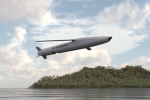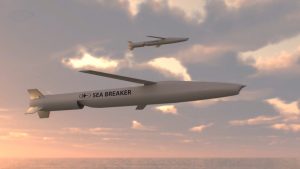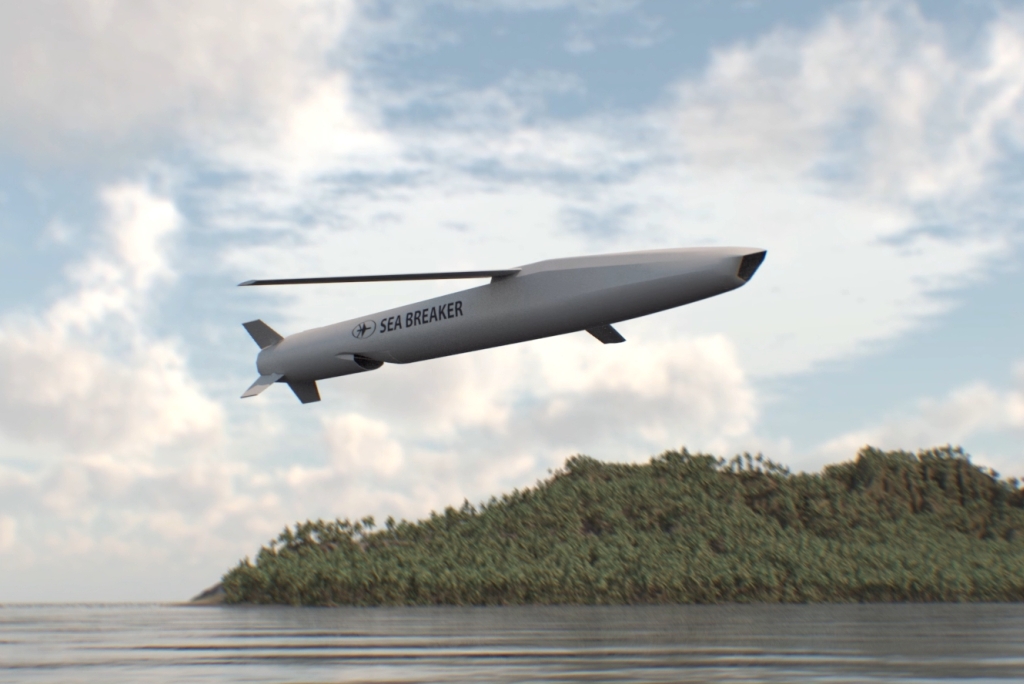
Rafael unveils Sea Breaker, a 5th generation naval and land-based long-range weapon system
30/06/2021 Rafael,
Sea Breaker,
Spyder
By Luca Peruzzi
A 5th generation long-range, autonomous, precision-guided missile system, enabling significant attack performance against a variety of high-value maritime and land targets is under testing by Rafael Advanced Defense Systems.
“Sea Breaker utilizes Rafael’s technological innovations such as electro-optics, computer vision, artificial intelligence and decision-making algorithms for full operational capability in GNSS-denied environments for maritime superiority missions”, said Dr. Ran Gozali, EVP, head of Rafael’s land and naval systems division, introducing a conference call with a small group of media representatives on the advanced system.

click on image to enlarge
“The new generation weapon system has been conceived and developed to cope with new and emerging challenges and threats of today and tomorrow battlefields”, said Eli, Head of Naval missile systems. Rafael has therefore confronted itself with requirements including the reduction of collateral damages, the advancement in electronic warfare as well as the GNSS/GPS jamming and denial together with advanced air defence systems and Anti Access/Area Denial (A2/AD) operational scenarios.
“The result is a 5th generation marine and land-launched weapon system capable to reach distances up to 300 km for accurate strike with pin-point hitting of a vast variety of high-value sea and land targets”, added Dan, the operational requirements manager.

click on image to enlarge
“The Sea Breaker has been conceived exploiting fifty years of precision weapon systems development and combat proven capabilities and utilizes all components built in-house by Rafael Advanced Defense Systems”, explained Eli. The system is under testing according to the Rafael representative, and more will be released in the incoming months about the development and qualification programme.
The Sea Breaker is less than 4 meters long and features a shaped front section airframe to increase stealthness; it is powered by a turbojet with underneath air inlet and is equipped with foldable wings placed at roughly the middle of the airframe. They have the same 2 meters span and geometry of those used by the Spice 1000 smart precise weapon system, and deploy after the Sea Breaker has left the canister under the booster power. The difference lays in the fact that on the Sea Breaker the foldable wings are mounted and integrated on top of the airframe while in the Spice 1000 they are attached underneath. The munition weights less than 400 kg without booster, features a high subsonic speed. It is equipped with a 113 kg (250 lb) penetration, blast and fragmentation warhead. The munition and the lightweight booster have a total length of less than 4.5 meters and a weight of around 450 kg, reaching roughly 600 kg with the canister.

click on image to enlarge
The new Rafael 5th generation missile is equipped with an advanced IIR (Imaging Infra-Red) seeker with Automatic Target Acquisition (ATA) and Automatic Target Recognition (ATR) which, thanks to the artificial intelligence, allow it to perform deep-learning and big-data based scene-matching. “The new terminal guidance system allows not only to pinpoint a specific aim of the target but also to discriminate intended targets such as ships from islands and coasts or hostile targets from uninvolved targets, significantly reducing collateral damages”, explained Eli during the presentation. Together with a full operational capability in GNSS/GPS-denied areas, in all weather conditions, alongside ECM immunity and jam-resiliency, Rafael claims, the advanced seeker and artificial intelligence-aided processing allow for fully autonomous mission and target engagement. The missile is however equipped with a datalink which supports real-time man-in-the-loop decision making and tactical updates. It also features a mid-flight abort capability and Battle Damage Assessment (BDA).

click on image to enlarge
The Sea Breaker system is equipped with an advanced mission planning and control system allowing to conduct an high-subsonic mission profile with sea-skimming and terrain-following low-level flight above ground. The terminal flight phase can be conducted with a multi-directional, synchronized full sphere coordinated attack based on defined attack plans, according to waypoints, azimuth, impact angle and aim point selection, “further enhancing the stealthness and survivability of the weapon system, while at the same time ensuring a high probability of mission success,” added Dan.
The weapon system terminal guidance is ideal, according to Rafael representatives, for engagement of maritime and land targets, stationary or moving, in advanced A2/AD arenas, and in littoral or brown waters, including archipelago scenarios, as well as for engagements in which previous generation RF-seeker-based missiles are not effective.

click on image to enlarge
The Sea Breaker was developed so far in the naval and land-based versions but the basic engineering activities have taken into account requirements for an air-launched version. If requested, the connected development activities could be carried out with small efforts but so far only the naval and land-based versions exist, Rafael representatives pointed out. It can be integrated into the combat system of small vessels such as fast attack missile boats of 100 tonnes or even less like patrol boats, in addition to corvettes and frigates. “A weapon package including four launchers with ammunitions weighs 2 tonnes (configuration-dependent)”, said Eli to which 400 kg of cabinets alongside communications (configuration-dependent) are to be added. A configuration with 8 launchers and missiles has a 4 tonnes weight (configuration-dependent). The land version is a central part of the shore defence, based on the same high-mobile launcher complex of Rafael’s Spyder family, allowing the latter air defence system to use both air defence and Sea Breaker anti-surface missiles. According to Rafael, the Spyder family uses Spyder-SR and Spyder-ER ammunition to provide low level quick-reaction capability while the Spyder-MR and Spyder-LR offer medium and long range target engagement capabilities. In the presentation provided to the media, the representative Spyder battery architecture employing both air defence and Sea Breaker missiles supports standalone launchers, or capable to operate as an integrated solution with launchers, a Command and Control Unit (CCU) and various sensors, missile loading and support vehicles, based on customer requirements. Both the naval and land-based versions of the Sea Breaker utilize the same launchers but with different software and ancillaries.
These solutions come from a market requirement, as the Sea Breaker has been already offered worldwide to the users club of Rafael systems. Without specifying interested customers, Rafael representatives said that “advanced discussions are on-going with many countries”, as the Sea Breaker is being proposed with a ‘philosophy of cooperation’ with potential customers which, based on specified requirements and partnership with the local industry, could include from final assembly and local support to components supply and integration.
Here is the Sea Breaker in action:

 www.thedrive.com
www.thedrive.com















